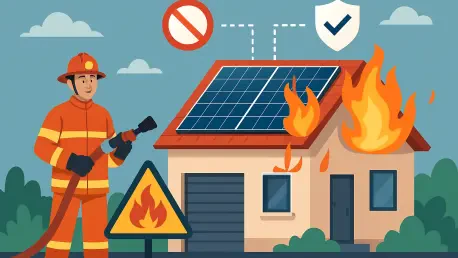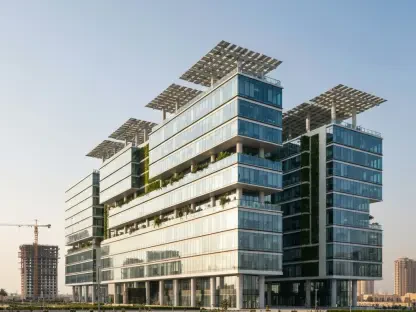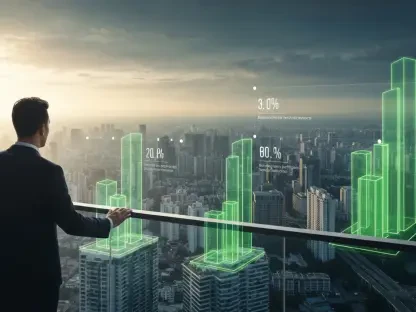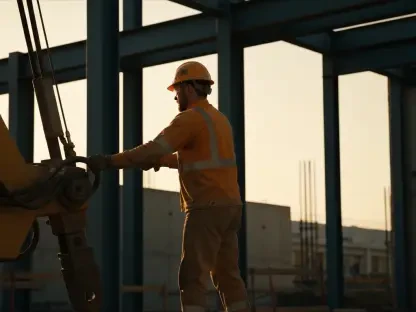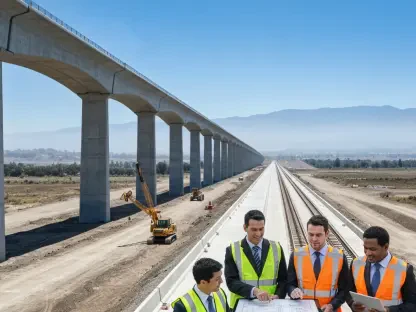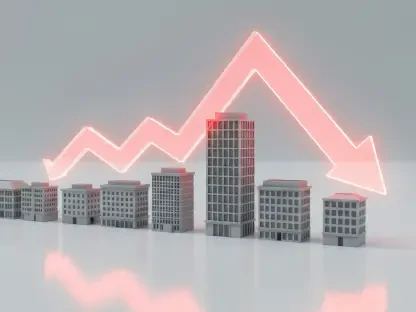The surge in photovoltaic (PV) system installations across residential, commercial, and industrial landscapes has revolutionized sustainable energy, yet it has also unveiled significant fire safety challenges that demand urgent attention. Over the past decade, these systems have become integral to structures ranging from urban rooftops to sprawling rural solar farms, amplifying the potential for electrical faults and fire hazards. The inherent risks tied to high-voltage components and varied installation environments have pushed fire safety to the forefront of industry concerns. Enter the updated Fire Brigade guidelines, rolled out in September 2025, crafted to confront these evolving dangers with precision and foresight. This comprehensive overhaul of the 2012 standards addresses the complexities of modern PV applications, ensuring that safety protocols align with technological advancements. By standardizing practices and enhancing emergency response measures, these guidelines aim to safeguard lives, protect property, and sustain the momentum of renewable energy adoption without compromise.
Addressing a Growing Safety Gap
The rapid proliferation of PV systems has outpaced the capabilities of older safety frameworks, leaving a patchwork of vulnerabilities across diverse installation settings. From high-rise commercial buildings in bustling cities to isolated agricultural structures in remote areas, each type of setup introduces unique fire risks that earlier guidelines, established over a decade ago, simply couldn’t cover comprehensively. Electrical malfunctions, improper installations, and proximity to combustible materials have emerged as recurring threats, often worsened by inconsistent local regulations. The updated guidelines introduced this year respond directly to these gaps by offering a robust, adaptable framework that prioritizes fire prevention across all contexts. This modern approach not only acknowledges the scale of PV integration into everyday infrastructure but also seeks to mitigate risks through detailed, forward-thinking standards that can evolve with the technology itself.
Beyond just identifying the problem, the new framework tackles the root causes of fire hazards in PV systems by drawing on lessons learned from past incidents and technological advancements. A key focus lies in addressing the variability of installation environments, ensuring that safety measures are not a one-size-fits-all solution but rather tailored to specific structural and operational challenges. For instance, urban settings might face risks from densely packed buildings, while rural installations could be more prone to environmental factors like vegetation proximity. The guidelines establish a baseline of safety that applies universally, while allowing for nuanced adjustments based on location and design. This balance is critical to reducing the likelihood of fire propagation and ensuring that potential incidents are contained before they escalate into major disasters. By closing these safety gaps, the updated rules provide a much-needed foundation for the continued growth of PV technology without sacrificing public safety.
Core Objectives and Innovative Measures
Central to the newly released guidelines are three pivotal goals: creating uniform technical safety criteria nationwide, minimizing fire risks through improved design and installation practices, and enhancing the effectiveness of emergency responses for firefighting teams. These objectives reflect a holistic strategy to address both prevention and reaction to fire hazards in PV systems. Among the standout innovations are stringent requirements for maintaining safe distances between PV components and flammable materials, which significantly lowers the chance of ignition. Additionally, enhanced mechanical protection for cables aims to prevent short circuits, a common trigger for fires. Perhaps most critical for emergency scenarios are the mandates for quick circuit interruption devices, which allow firefighters to isolate power swiftly and safely during a crisis. Together with compulsory maintenance schedules and detailed emergency isolation protocols, these measures mark a substantial leap forward in safeguarding both property and personnel.
Delving deeper into the impact of these innovations, the emphasis on firefighter accessibility and rapid response cannot be overstated. In past incidents, the inability to quickly disconnect PV systems has posed significant dangers to emergency responders, often delaying critical interventions. The new guidelines mandate clear, accessible mechanisms for power isolation, ensuring that firefighters can operate without the looming threat of live electrical currents. Furthermore, the requirement for regular maintenance checks ensures that potential issues, such as degraded wiring or faulty components, are identified and addressed before they become catastrophic. Documentation standards also play a vital role, providing a clear record of compliance and system health that can be invaluable during inspections or emergencies. These combined efforts create a safety net that not only reduces the incidence of fires but also minimizes harm if an incident does occur, setting a new benchmark for PV system safety.
Comprehensive Coverage and Real-World Application
The scope of the updated guidelines is notably expansive, encompassing PV systems with nominal voltages up to 1500 V in direct current, and applying to a vast array of environments under fire safety oversight. This includes everything from residential and commercial buildings in urban centers to rural installations and even solar concentration systems on tracking structures. A supplementary circular issued shortly after the guidelines’ release further extends their reach to lightweight structures and existing systems undergoing significant modifications or maintenance. Such broad applicability ensures that no installation is overlooked, regardless of size, location, or age. By establishing consistent safety standards across these varied contexts, the guidelines eliminate discrepancies that could otherwise lead to vulnerabilities, creating a unified approach to fire prevention that benefits all stakeholders in the PV ecosystem.
In practical terms, the application of these guidelines translates into tangible safety improvements across diverse scenarios. For instance, in densely populated urban areas, where fire can spread rapidly between structures, the rules ensure that PV installations are designed with containment in mind, minimizing the risk of widespread damage. In rural settings, where emergency response times might be longer, the focus on preventative measures like cable protection and safe distancing from vegetation becomes even more critical. The inclusion of existing systems under the new rules also addresses a significant oversight from past frameworks, ensuring that older installations are brought up to modern standards during upgrades. This comprehensive coverage not only strengthens the overall safety landscape but also instills confidence among property owners and industry professionals that PV technology can be integrated responsibly, no matter the setting or scale of deployment.
Easing the Transition for Stakeholders
Recognizing the potential disruption of abrupt regulatory changes, the guidelines incorporate transitional provisions to support stakeholders with projects already underway before the implementation date of September 1, 2025. Those who had initiated regulatory processes, secured binding contracts, or begun installation work by this cutoff are permitted to complete their projects under the previous standards. This pragmatic approach prevents undue financial and operational burdens on companies and individuals mid-process, striking a balance between the urgent need for updated safety measures and the realities of ongoing commitments. It reflects a thoughtful consideration of industry dynamics, ensuring that the push for heightened safety does not derail existing efforts or create unnecessary hardship for those already invested in PV development.
Further exploring the implications of these provisions, the transitional framework also serves as a bridge to broader compliance over time, allowing the industry to adapt gradually to stricter requirements. For designers, installation firms, and maintenance teams, this means additional time to familiarize themselves with the new technical criteria and adjust their practices accordingly. It also provides clarity for property managers and owners, who might otherwise face confusion over which rules apply to their projects. The guidelines’ impact extends beyond immediate safety improvements, fostering a culture of accountability and preparedness across the sector. By offering this flexibility, the Fire Brigade ensures that the transition to enhanced safety standards is both fair and feasible, paving the way for long-term adherence without alienating key players in the PV and construction fields. This balanced strategy underscores a commitment to progress that prioritizes both safety and practicality.
Building a Safer Future for Renewable Energy
Reflecting on the rollout of these pivotal guidelines, it’s evident that a significant milestone has been achieved in addressing the fire risks tied to the widespread adoption of PV systems. The comprehensive updates tackled the shortcomings of outdated standards, introducing precise measures that prioritized prevention and emergency readiness. The broad scope ensured that diverse installations, from urban to rural, were covered under a unified safety framework, while innovative requirements like quick circuit isolation enhanced responder safety. Transitional provisions also demonstrated a pragmatic approach, easing the shift for stakeholders already in progress.
Looking ahead, the focus shifts to sustained implementation and adaptation of these robust standards across the industry. Stakeholders are encouraged to invest in training and resources to meet the new requirements, ensuring that safety remains at the core of PV integration. Regular updates to guidelines may be necessary as technology evolves, maintaining alignment with emerging risks. Collaboration between regulators, professionals, and technology developers will be key to refining these protocols, fostering an environment where renewable energy thrives alongside uncompromising safety.
